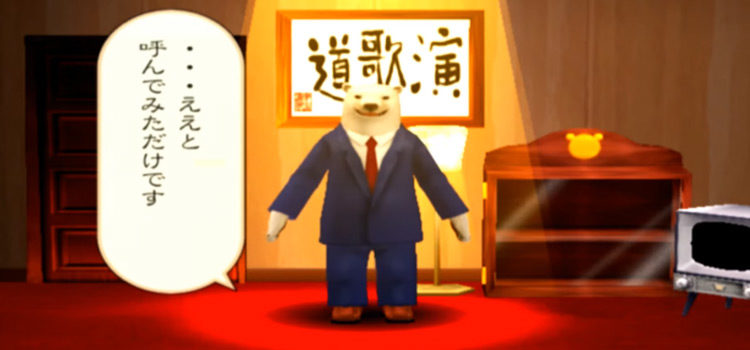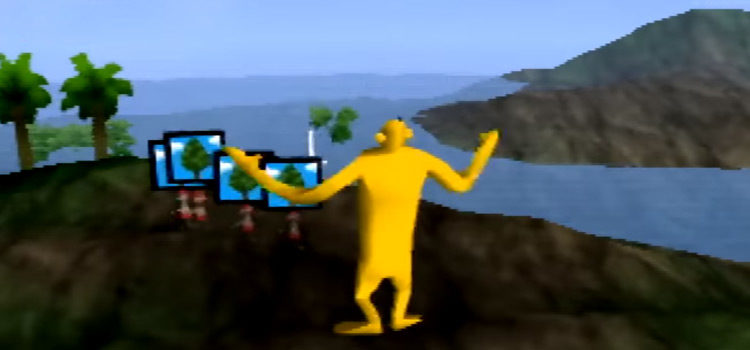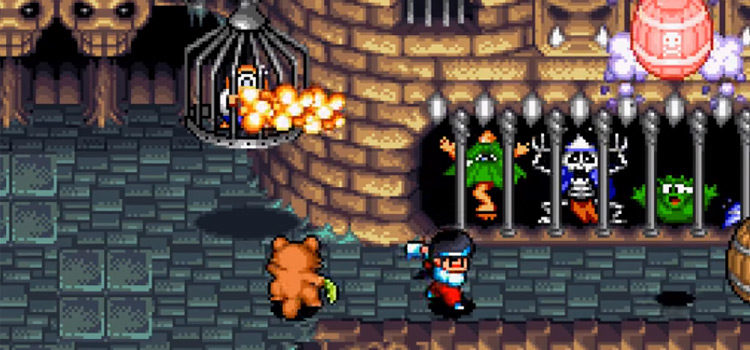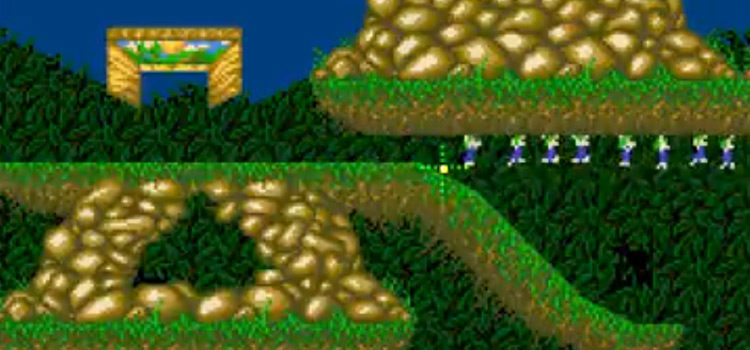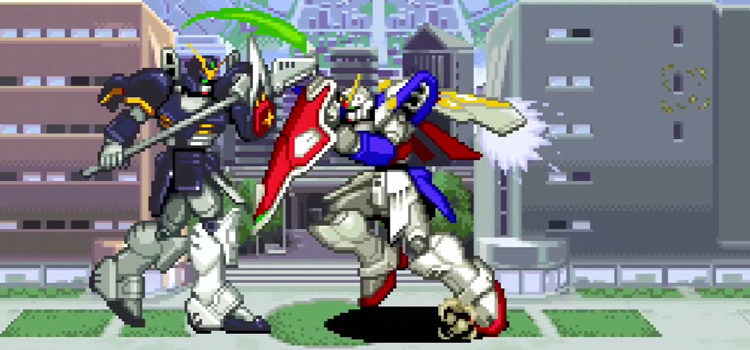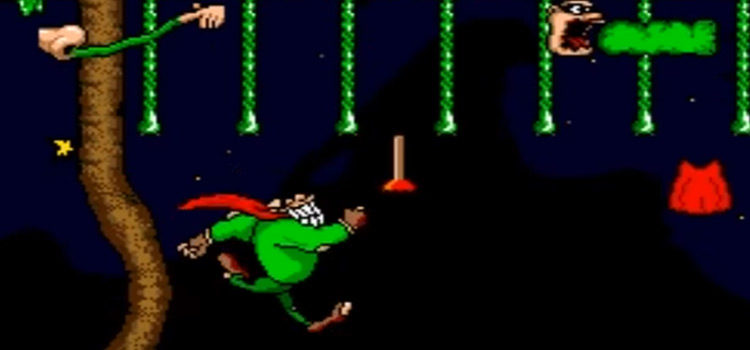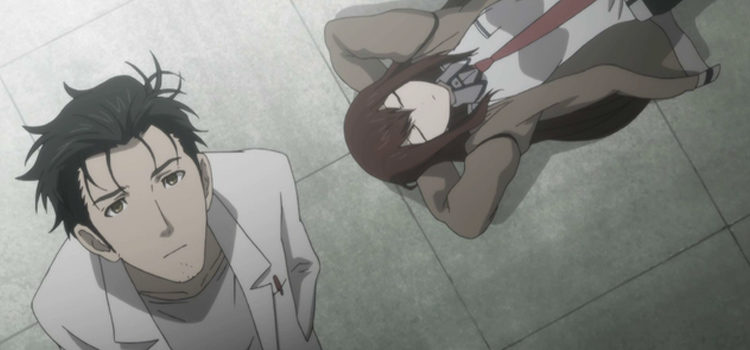15 Best Japan-Only SNES/SFC Games That Never Left Japan
This post may contain affiliate links. If you buy something we may get a small commission at no extra cost to you. (Learn more).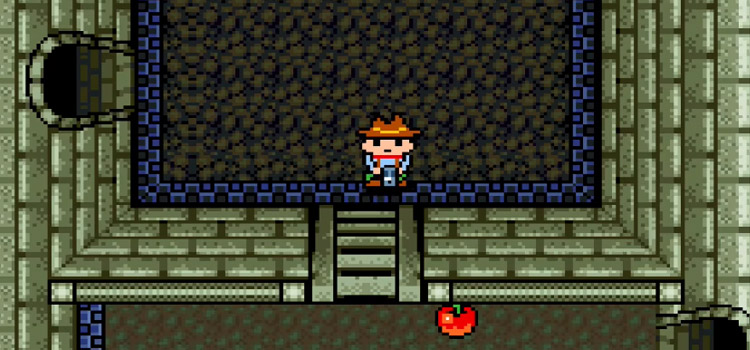
It’s fair to say that the SNES was the clear winner of the fourth-generation console war.
Nintendo landed some sweet ports like the first home console release of Street Fighter II, and also had some of the best first-party exclusive titles of the decade.
While the SNES has over 900 games that are a treasure trove of entertainment, there are many gems that most Western gamers missed out on.
That’s because these fantastic titles never made it out of Japan.
But with modern SFC ROMs and translations, now’s as good a time as any to dive into this Japanese-exclusive titles.
15. Super Dimension Fortress Macross: Scrambled Valkyrie (1993)
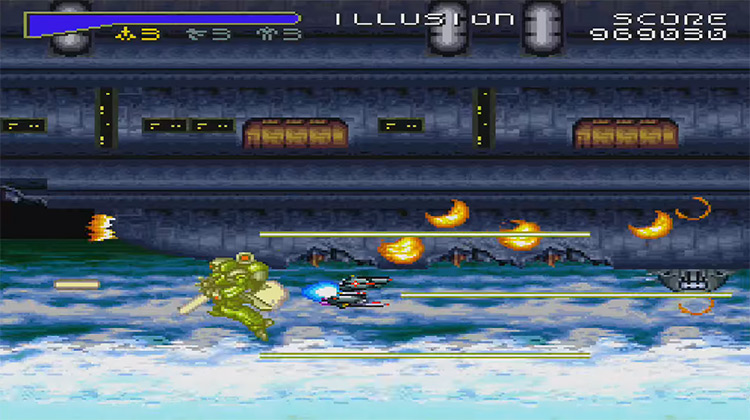
Super Dimension Fortress Macross from 1982 was one of the most influential mecha anime of its time.
And this shoot-em-up does it justice with some of the best gameplay on the Super Famicom.
Based on the Parallel World timeline from Macross: Do You Remember Love, this title lets you choose between three pilots with unique shooting patterns to pilot the VF-1 Valkyrie variable fighter.
It’s tough, but manageable for anyone with no prior shoot-em-up experience.
As long as they have some perseverance.
14. Magical Pop’n (1995)
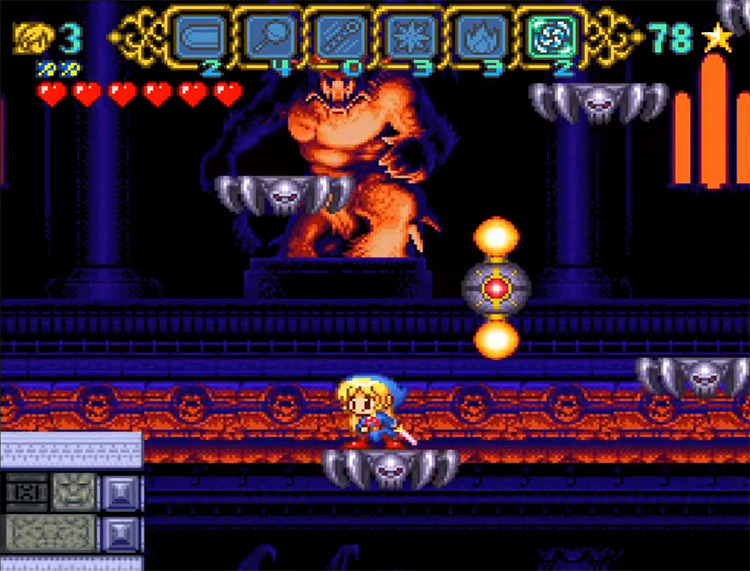
If you like Castlevania-like gameplay but can’t really get behind the dark and gritty Gothic aesthetic, consider playing Magical Pop’n.
This action platformer shines for its appealing interactive backgrounds and vivid graphics.
The controls are responsive, and combat is engaging, so it’s pretty hard to put down.
And it better be, considering it mysteriously lacks a save feature.
Depending on the weapons you acquire, you’ll unlock new ways to progress through the game, giving it a lot of replay value.
13. Tales of Phantasia (1995)
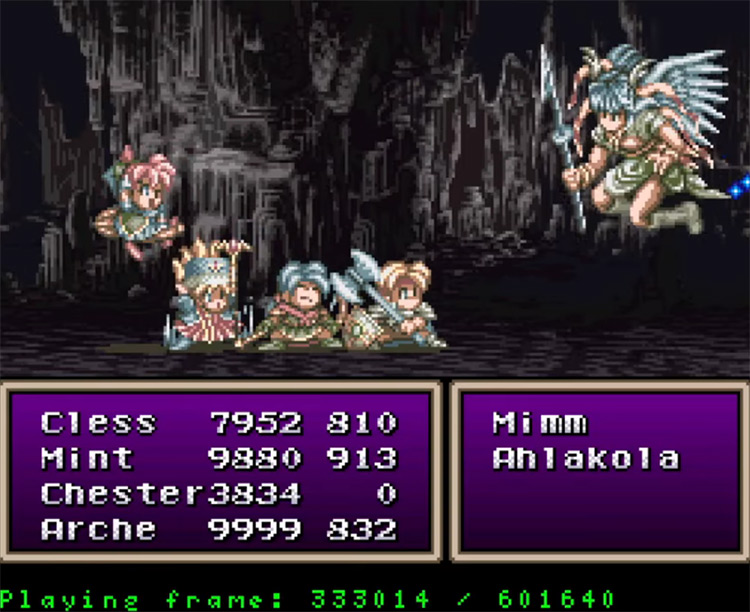
Tales of Phantasia holds a special place in my heart for being the starting point of my favorite JRPG franchise of all time.
This old-school action RPG already had everything that makes the Tales series so attractive, including the typical high fantasy setting, fantastic storyline, and no lack of Japanese anime/manga tropes.
It also had a great dynamic combat system – though the ally AI is famously dumb.
Give it a try if you can get into this type of gameplay.
12. Bahamut Lagoon (1996)
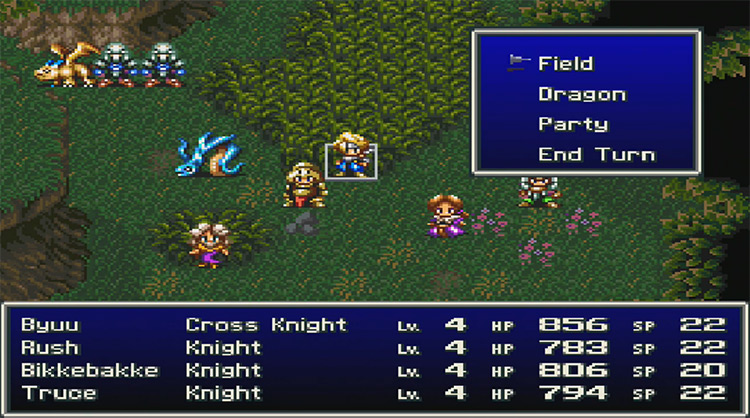
Bearing the name of the most well-known boss/summon from the Final Fantasy series, this tactical RPG by Square lets you raise dragons to command on your continued campaign against the invading Granbelos Empire.
Each dragon can evolve into different forms depending on the items, weapons, armor, or accessories that you choose to feed it.
Despite selling relatively well in Japan and being praised for its creative gameplay and delightful characters, the game remains locked up in Japan to this day.
11. The Great Battle V (1995)
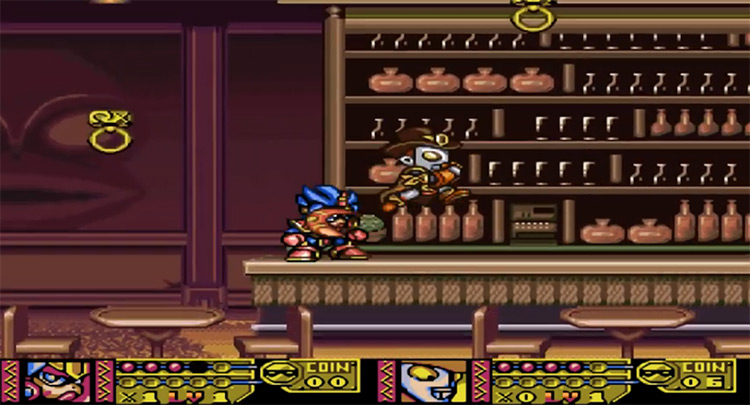
Banpresto’s “The Great Battle” was a well-loved series on the Super Famicom.
And its fifth installment may just be the best entry.
The game lets you choose between one of four playable characters, each of which is a different super-deformed (AKA chibi) version of a giant robot or superhero from anime like Gundam and Kamen Rider.
Along with the action-platformer gameplay the series is known for, TGV added gallery shooting segments similar to Wild Guns that go well with its Wild West setting.
With colorful graphics and a fantastic two-player co-op mode, this game is a blast – even if you can’t read Japanese.
10. Fire Emblem: Genealogy of the Holy War (1996)
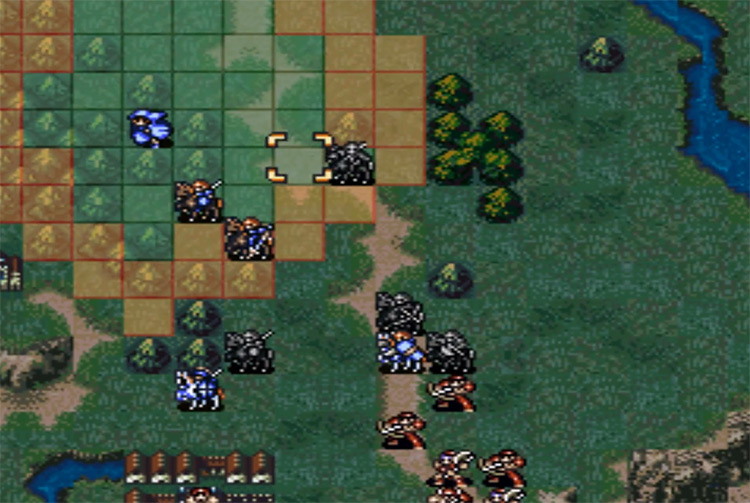
Audiences worldwide first experienced the excellent strategic battles of Fire Emblem with the eponymous 2003 GBA game.
But that was actually the seventh entry in this previously Japan-only series.
Among the best from this ancestral era is Genealogy of the Holy War – the fourth installment in the franchise.
The game marries fantastic tactical gameplay with an engaging story and lovable characters.
If you wanna experience it for yourself, I recommend this translation patch.
9. Front Mission Series: Gun Hazard (1996)
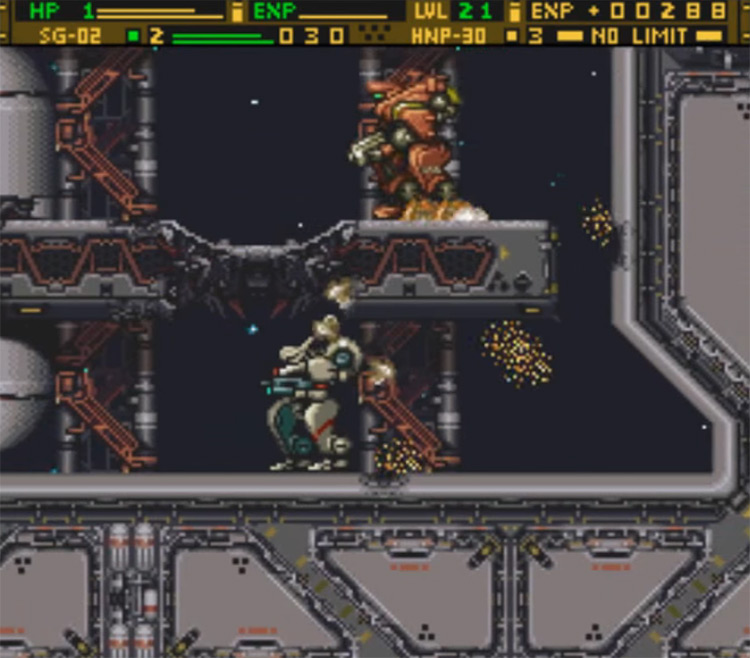
I always loved the mech-riding sections of classic Mega Man X games back when I was a child. So when I first laid eyes on Gun Hazard, I was excited, to say the least.
This game delivers an exhilarating experience that replaces most of the tactical elements of the original Front Mission for on-the-ground action aboard your Wanzer.
Bringing down enemies and clearing missions rewards you with EXP and money to improve your bipedal walker.
And you get to choose which weapons and defensive systems to outfit your mech with, so you can rain fire on the enemy your way.
8. Rockman & Forte (1998)
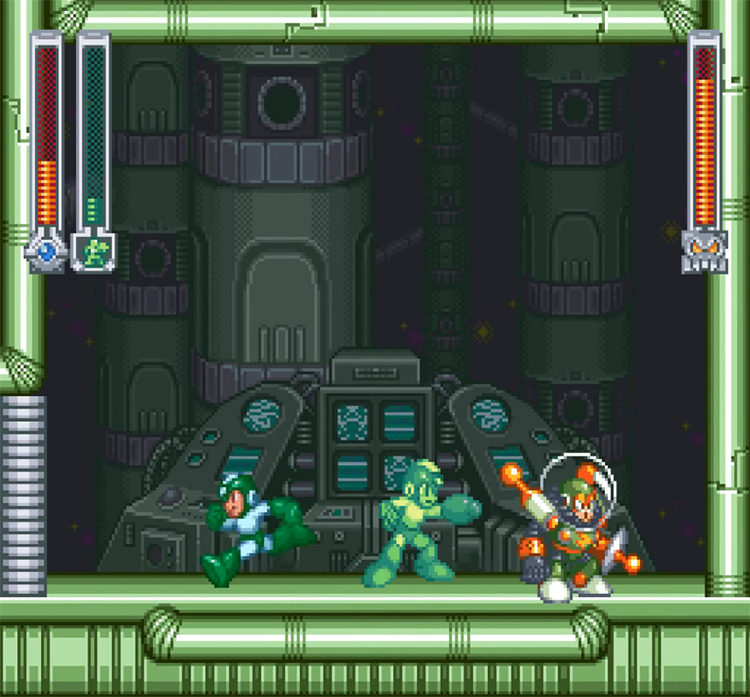
There were plenty of excellent MegaMan titles on the SNES.
But the best MegaMan game on Nintendo’s 16-bit machine never made it out of Japan.
Graphically, Rockman & Forte looks pretty similar to MegaMan 8 – but gameplay-wise, it’s a whole other beast.
Besides offering two very distinct characters to play as, it switches up the way boss fights work.
In the past, you could “easily” memorize their patterns and plan accordingly. But in this game, they’re much more chaotic and unpredictable, forcing you to adapt on the fly.
The game was eventually released abroad as MegaMan & Bass (2003) for the GBA. Still, the Super Famicom release is the better of the two. Especially when it comes to visual aspects.
7. Star Ocean (1996)
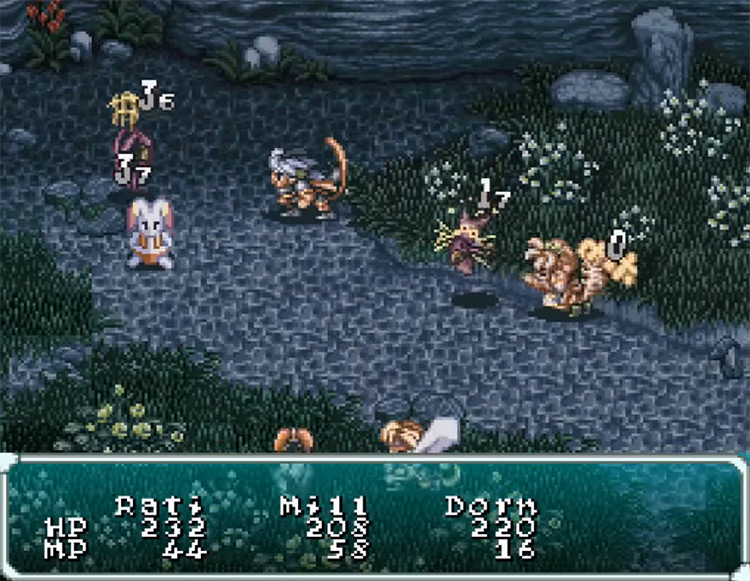
The Star Ocean franchise was made famous among Western audiences in 1991 by its second installment – SO: The Second Story for Sony’s PlayStation.
Unfortunately, the original Super Famicom title never made it abroad. And we had to wait for its PSP remake – Star Ocean: First Departure (2008) – to experience this fantastic JRPG.
Among its contributions to the JRPG genre were “Private Actions”.
These dialogue-heavy events let you get to know each one of your party members in-depth.
It was a great way to flesh out your companions, and other series soon picked up on the idea.
If you want to experience this game in its 16-bit glory then check out this translation patch.
6. Super Bomberman 5 (1997)
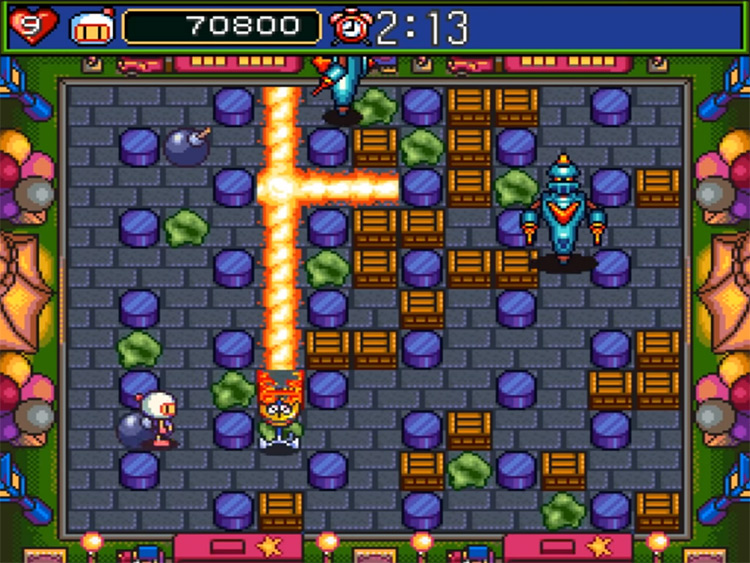
If you’re a fan of the white bomber, you’ll remember Super Bomberman 3 on the SNES as one of the best games on the series.
But it was the last one on the SNES to be released abroad.
It’s a shame, considering Super Bomberman 5 blows it out of the water with more maps, more characters, better graphics, and a whole lot more.
It has a fantastic single-player campaign with two distinct endings depending on your completion percentage.
It also has a bombin’ multi-player experience with 13 varied levels featuring great gimmicks and the same frantic gameplay.
In addition to the nine base characters, you’ll find a create-a-character mode exclusive to SB5. Arguably one of the more fun Bomberman games in the entire franchise.
If you can find a translation for it, definitely give this a try.
5. Mobile Suit Gundam Wing: Endless Duel (1996)
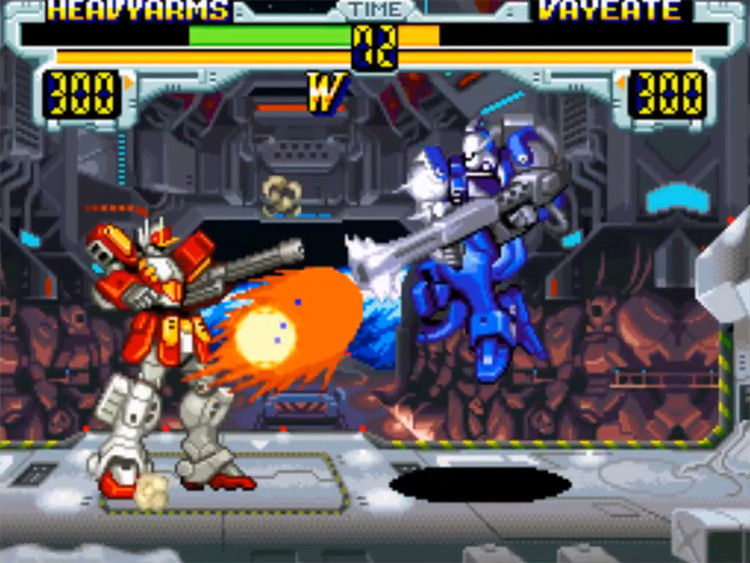
Based on MS Gundam Wing (1995), Endless Duel is a gorgeous fighter with fantastic gameplay that would have been a total hit had it been released outside of Japan.
It features plenty of bad-ass Gundams with large highly-detailed sprites duking it out in fast-paced battles in the style of Marvel vs. Capcom.
The story mode is pretty good, though it gets hellishly difficult toward the end.
And the multi-player is a total gem that’ll keep you hooked for hours on end.
Regardless of whether you’re a fan of Gundam Wing or had never heard of the series, this title is one of the best fighters on the Super Famicom.
4. Gunple: Gunman’s Proof (1997)
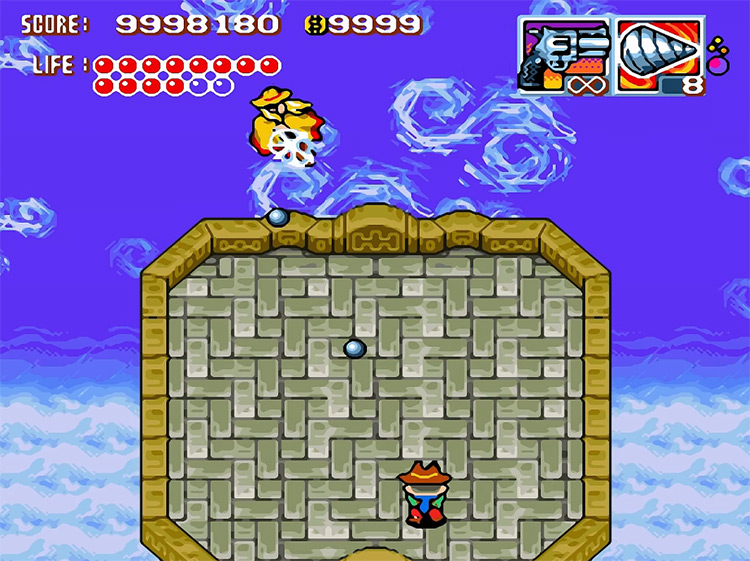
Bringing together the sense of adventure of a Legend of Zelda game and the exciting combat of a top-down shooter, Gunple: Gunman’s Proof is one of the most widely appealing titles on the Super Famicom.
The game could be classified as a Weird Western – similar to Wild ARMs on the PlayStation.
It mixes the classic appeal of the American Wild West with futuristic technology and a sci-fi plot involving aliens from outer space.
While it does feature some puzzles, the game’s primary focus is shooting bad guys left and right.
With eight dungeons to explore and plenty of cool guns to try out, this title is easy to pick up, but near-impossible to put down.
3. Seiken Densetsu III (1995)
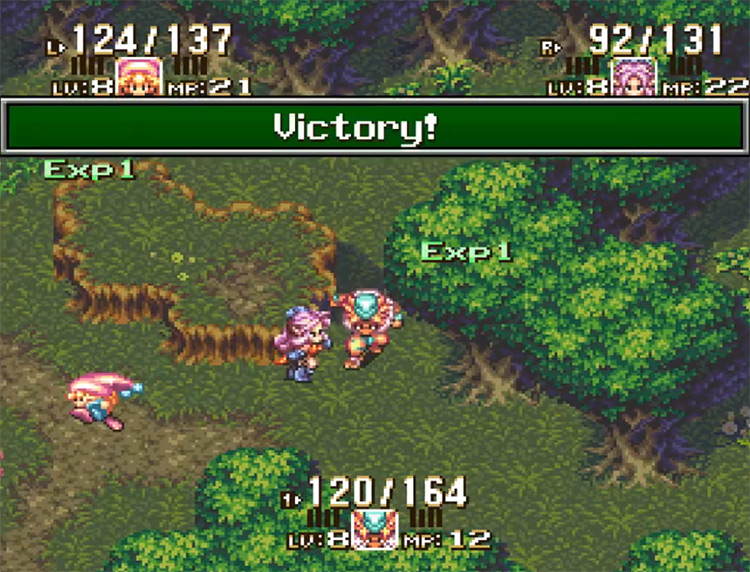
If there’s one thing I’ll never forgive Square for, it’s keeping the third entry in the “Mana” series Japan-exclusive for so long.
It plays much like its predecessor, the quintessential SNES action RPG – Secret of Mana.
Yet for some reason, they decided to bring down the co-op player count from three to just two in this title.
But it’s still one of the best multiplayer options on the SFC.
And you can now play this game in English as part of the Collection of Mana for the Nintendo Switch.
There’s also a remake of this specific game called Trials of Mana with charming 3D graphics and the same excellent gameplay.
2. Dragon Quest V: Hand of the Heavenly Bride (1992)
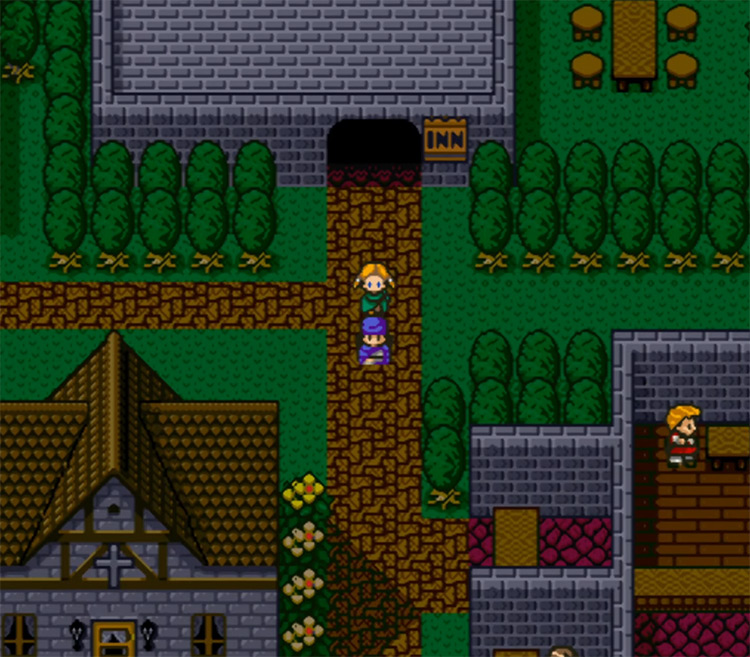
The Dragon Warrior series had been widely popular outside of Japan during the NES era.
Still, when the time came to make the jump to 16-bit, Enix just wasn’t in any position to invest in localization – and the series was lost to Western audiences for years to come.
Dragon Quest V is the second title in the Zenithian trilogy.
It tells a mature story that follows The Hero through most of his life, from the moment he’s born, through his youth, and eventually into fatherhood.
Besides bright and colorful graphics, the game introduced some interesting new elements to Dragon Quest’s tried-and-true formula, including monster-catching mechanics.
This would go on to inspire the Dragon Quest Monsters series.
And if you wanna try your hand at Dragon Quest 5 without learning Japanese, you can find an English patch here.
1. Live A Live (1994)
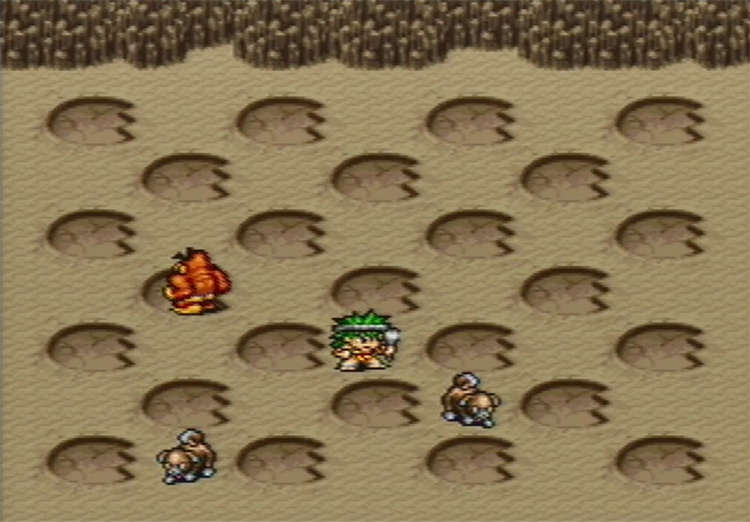
If you’re a bit tired of the classic & almost dogmatic gameplay of games like Dragon Quest and the first few Final Fantasy entries, then Live A Live is something you absolutely have to try.
This unusual JRPG lets you experience seven unique storylines, each starring a new character in a different era – including prehistory, the Japanese Warring States period, the American Wild West, and the far future.
Already sounds pretty weird, right?
These protagonists have contrasting skills and trials to overcome, leading to gameplay and combat that varies quite a bit between these campaigns.
Once you’ve beat each campaign individually, you can finally witness the “True Ending” and bring the hammer of justice down on the ultimate villain of Live A Live – Odio.
A must-try if you’re a die-hard Super Nintendo fanatic.
And even if you’re not into Japanese, there’s always the English patch to play with.
